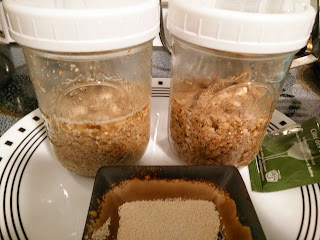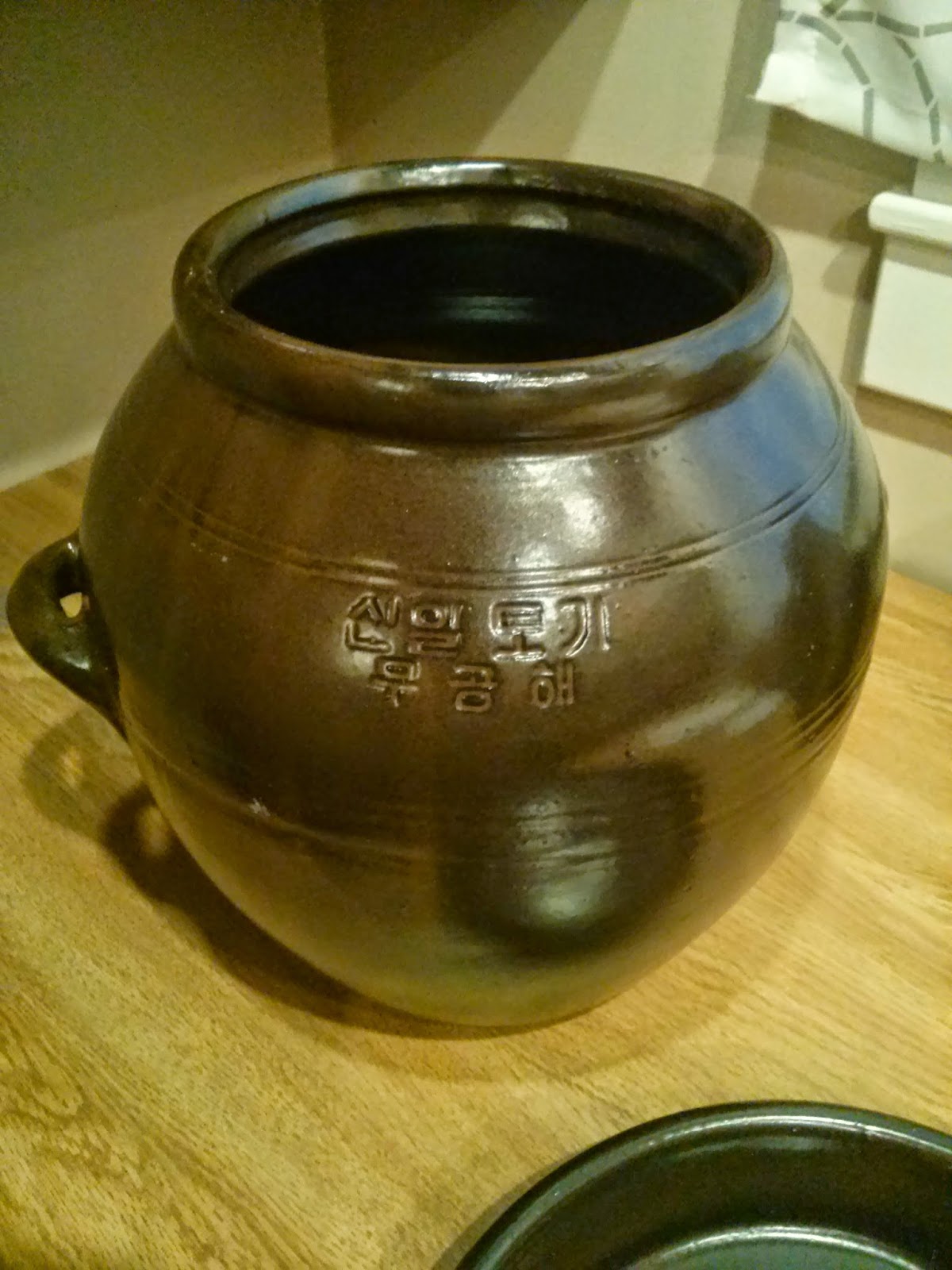Kombucha brewing follow-up
This is an update to the status of my kombucha brewing. I plan to talk about how the process went, how the kombucha turned out, and some issues that were encountered along the way.
Mostly green tea was used, with one batch of a flavored black tea.
The process itself was pretty simple:
All the equipment was cleaned.
A pot of sweet (green) tea was made and cooled to room temperature.
The kombucha "mother" was transferred into the glass fermenter.
The sweet tea was added to the fermenter with the mother, and the lid was placed loosely on top.
I tasted the kombucha every day to check the flavor, and poured about 80% of it into a bottle when I thought it was ready. The taste was great with green tea, and there was a good amount of efervesence from the fermentation. The black tea turned out metallic-tasting, and I thought it was nasty, so I dumped that batch and considered it a failure. I attributed the off-taste to the flavoring that was already in the tea, and I plan to use only plain, loose-leaf teas from now on.
I tried to make a new pot of sweet to to feed the mother each time the finished kombucha was harvested. Sometimes this didn't happen, and the remnants of the last batch sit in the fermenter for a few days longer. As a result, the new SCOBY that forms on top grew in thicker than the previous ones. However, restarting with a fresh pot of sweet tea resulted in some decent kombucha even after it was left to its own devices for a few days.
For pest control a paper towel was placed on top of the fermenter between the mouth of the jar and the lid and secured with a rubber band, because fruit flies materialize out of dust in the summer months. This worked well and no flies were found floating in the kombucha.
When I started, a 5 gallon jug with a plastic spout was used. This worked well until the sediment from the kombucha, otherwise known as the "beard", gathered in the spout and started to clog it. Eventually, a tiny SCOBY formed inside the spout, preventing any kombucha from leaving the jar. Also, the plastic spout started to change color on the inside, which I didn't feel comfortable with. As a result, the large jug was ditched in favor of a smaller, spoutless glass jug from IKEA.
Before the smaller jug was used, I let the SCOBY go unattended for almost two weeks. This resulted in a monstrously thick SCOBY with several layers. When the big jug was cleaned out, pieces of the giant scoby were cut up and used for the new batch in the small glass jug. The rest was sliced and tossed into the compost pile, because I read that scoby can be a good source of nutrients for plants when composted.
All things considered, kombucha brewing is a pretty easy hobby to maintain, and the fruits of your labor can save you some major $$$ when compared to the price of kombucha in your supermarket. As with all hobbies, it requires some TLC, but no more than a moderately-thirsty house plant. I have yet to experiment with secondary fermentations and adding flavorings to my kombucha, but I suspect that would add another level of complexity.
Happy Brewing!



Comments
Post a Comment